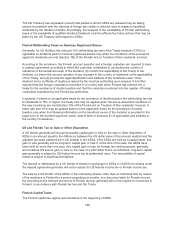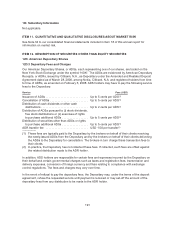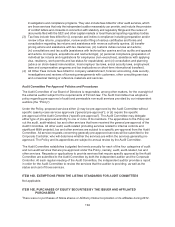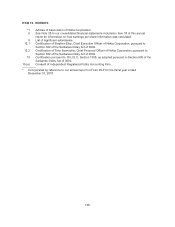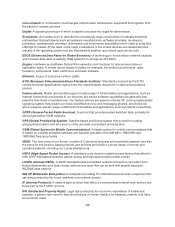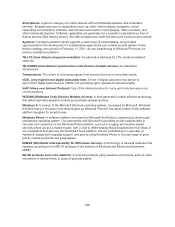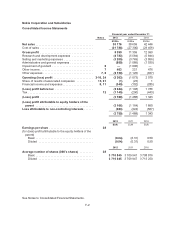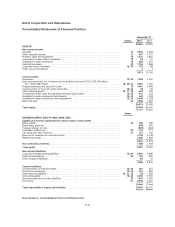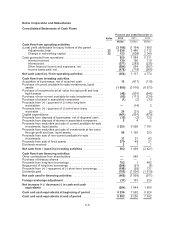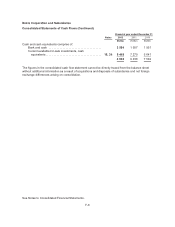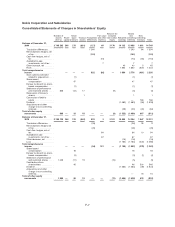Nokia 2012 Annual Report Download - page 199
Download and view the complete annual report
Please find page 199 of the 2012 Nokia annual report below. You can navigate through the pages in the report by either clicking on the pages listed below, or by using the keyword search tool below to find specific information within the annual report.Core network: A combination of exchanges and the basic transmission equipment that together form
the basis for network services.
Digital: A signaling technique in which a signal is encoded into digits for transmission.
Ecosystem: An industry term to describe the increasingly large communities of mutually beneficial
partnerships that participants such as hardware manufacturers, software providers, developers,
publishers, entertainment providers, advertisers and ecommerce specialists form in order to bring their
offerings to market. At the heart of the major ecosystems in the mobile devices and related services
industry is the operating system and the development platform upon which services are built.
EDGE (Enhanced Data Rates for Global Evolution): A technology to boost cellular network capacity
and increase data rates of existing GSM networks to as high as 473 Kbit/s.
Engine: Hardware and software that perform essential core functions for telecommunication or
application tasks. A mobile device engine includes, for example, the printed circuit boards, radio
frequency components, basic electronics and basic software.
Ethernet: A type of local area network (LAN).
ETSI (European Telecommunications Standards Institute): Standards produced by the ETSI
contain technical specifications laying down the characteristics required for a telecommunications
product.
Feature phone: Mobile devices that support a wide range of functionalities and applications, such as
Internet connectivity and access to our services, but whose software capabilities are generally less
powerful than those of smartphones. Our feature phones are based on Series 30, a non-programmable
operating system that powers our most cost-effective voice and messaging phones, and Series 40,
which supports a wider range of different functionalities and applications, such as Internet connectivity.
GPRS (General Packet Radio Services): A service that provides packet switched data, primarily for
second generation GSM networks.
GPS (Global Positioning System): Satellite-based positioning system that is used for reading
geographical position and as a source of the accurate coordinated universal time.
GSM (Global System for Mobile Communications): A digital system for mobile communications that
is based on a widely accepted standard and typically operates in the 900 MHz, 1800 MHz and
1900 MHz frequency bands.
HERE: The new name of our former Location & Commerce business and reportable segment and also
the brand for the location-based products and services we build for a broad range of devices and
operating systems, including our Lumia smartphones.
HSPA (High-Speed Packet Access): A wideband code division multiple access feature that refers to
both 3GPP high-speed downlink packet access and high-speed uplink packet access.
I-HSPA (Internet-HSPA): A 3GPP standards-based simplified network architecture innovation from
Nokia implemented as a data overlay radio access layer that can be built with already deployed
WCDMA base stations.
IMS (IP Multimedia Subsystem): A subsystem providing IP multimedia services that complement the
services provided by the circuit switched core network domain.
IP (Internet Protocol): A network layer protocol that offers a connectionless Internet work service and
forms part of the TCP/IP protocol.
IPR (Intellectual Property Right): Legal right protecting the economic exploitation of intellectual
property, a generic term used to describe products of human intellect, for example, patents, that have
an economic value.
198



